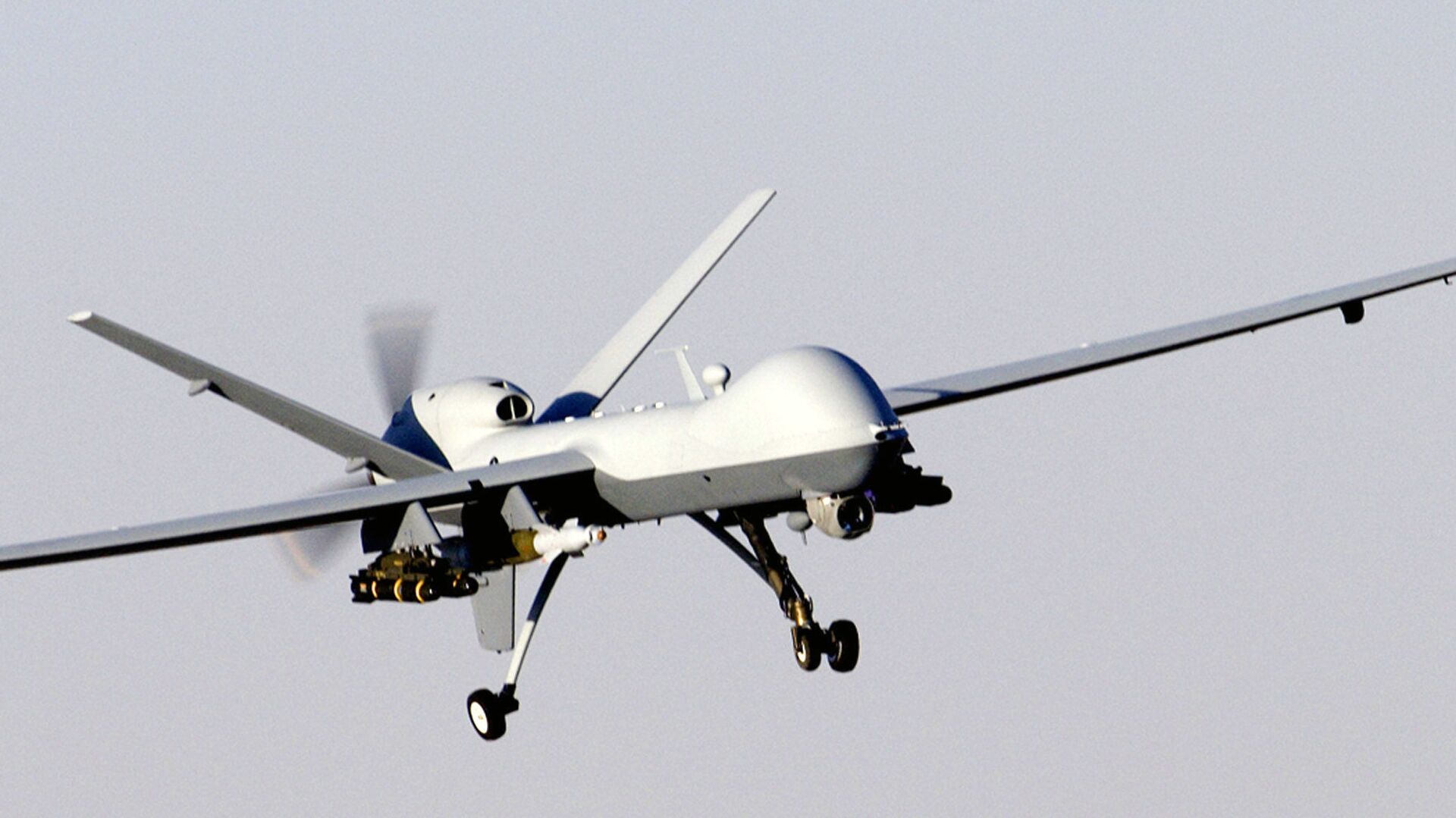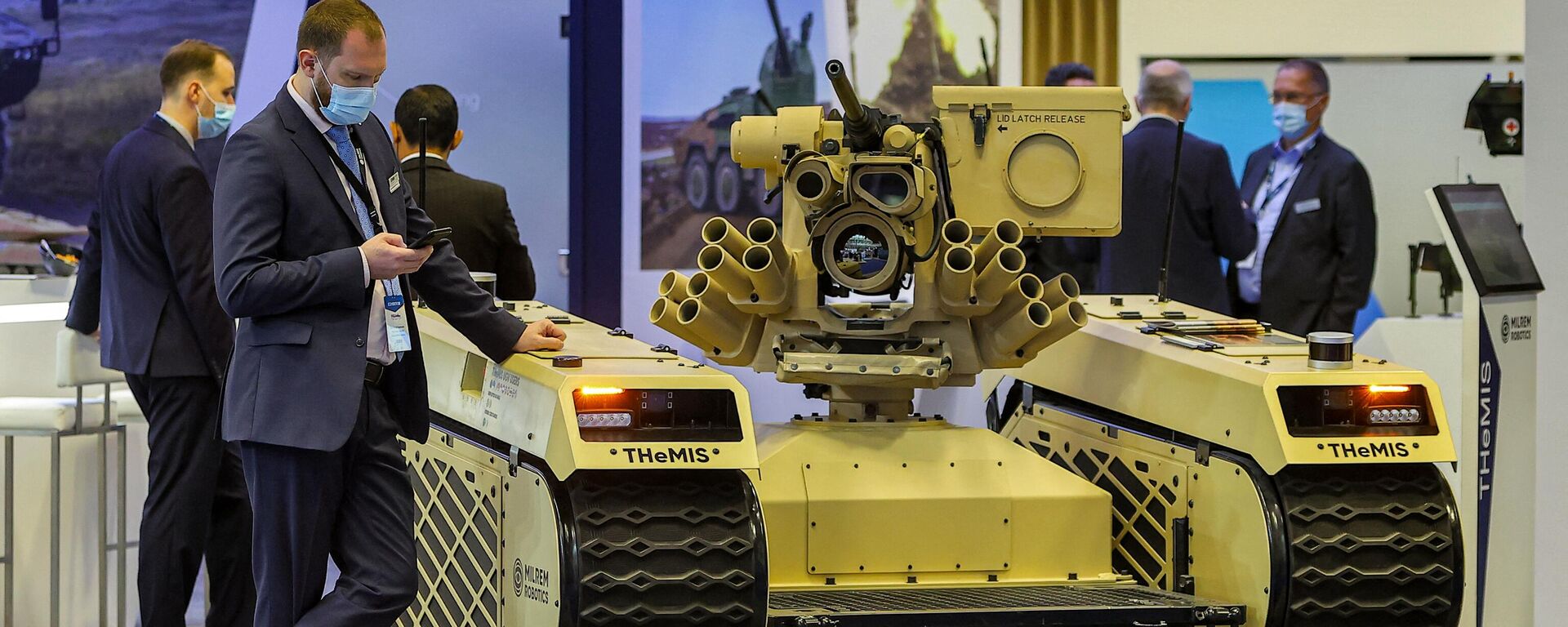https://sputnikglobe.com/20240527/natos-useless-drone-wall-just-another-step-towards-large-scale-confrontation-with-russia-1118653963.html
NATO's Useless 'Drone Wall' Just Another Step Towards 'Large-Scale Confrontation' With Russia
NATO's Useless 'Drone Wall' Just Another Step Towards 'Large-Scale Confrontation' With Russia
Sputnik International
A group of NATO members who share a border with Russia intend to ramp up the use of drones ostensibly to protect their territory against unspecified “provocations.”
2024-05-27T16:43+0000
2024-05-27T16:43+0000
2024-05-27T16:43+0000
analysis
military & intelligence
europe
russia
nato
drones
https://cdn1.img.sputnikglobe.com/img/107878/97/1078789773_0:163:2100:1344_1920x0_80_0_0_6f6aeffffc82f48541da7bd2f0636fd2.jpg
Lithuanian Interior Minister Agne Bilotaite has touted the so-called “drone wall” scheme, claiming that Estonia, Latvia Finland, Norway and Poland are also on board."This is a completely new thing, a drone wall stretching from Norway to Poland, and the goal is to use drones and other technologies to protect our borders," Bilotaite told media.This endeavor supposedly looks to help those countries involved to “protect against provocations from unfriendly countries and to prevent smuggling,” Bilotaite added.While this “drone wall” concept is a new idea, it is “more evolutionary than revolutionary,” said former Swedish Armed Forces officer and politician Mikael Valtersson.“Drones are already in use for border protection, but a drone wall must mean that there will be around-the-clock surveillance with drones along the entire border,” he told Sputnik.The problem with this “drone wall” scheme is that it is also expected to include an anti-drone component as well, and it remains unclear exactly how the countries involved are going to do that, Valtersson noted.Electronic warfare capabilities seem like a more efficient solution but, as Valtersson pointed out, their efficiency “might be limited both in range, but also against totally independent drones that aren't remotely piloted.”So far, the whole “drone wall” initiative appears to be just an attempt by the countries involved to show off “their toughness against Russia and the [alleged] Russian threat,” according to Valtersson.“They do something with limited efficiency, but proclaim it like it was a revolutionary thing,” he added. “They might even believe that they are increasing their security, but in reality this is just another step down the slippery slope towards a large-scale confrontation between the Western powers and Russia. This heightens tension and lowers security, at a great cost, not the other way around.”
https://sputnikglobe.com/20240527/estonian-drone-maker-expands-unmanned-ground-vehicle-production-1118653387.html
russia
Sputnik International
feedback@sputniknews.com
+74956456601
MIA „Rossiya Segodnya“
2024
Sputnik International
feedback@sputniknews.com
+74956456601
MIA „Rossiya Segodnya“
News
en_EN
Sputnik International
feedback@sputniknews.com
+74956456601
MIA „Rossiya Segodnya“
Sputnik International
feedback@sputniknews.com
+74956456601
MIA „Rossiya Segodnya“
europe drone defense, nato drone wall, drones border security
europe drone defense, nato drone wall, drones border security
NATO's Useless 'Drone Wall' Just Another Step Towards 'Large-Scale Confrontation' With Russia
A group of NATO members who share a border with Russia intend to ramp up the use of drones ostensibly to protect their territory against unspecified “provocations.”
Lithuanian Interior Minister Agne Bilotaite has touted the so-called “drone wall” scheme, claiming that Estonia, Latvia Finland, Norway and Poland are also on board.
"This is a completely new thing, a drone wall stretching from Norway to Poland, and the goal is to use drones and other technologies to protect our borders," Bilotaite told media.
This endeavor supposedly looks to help those countries involved to “protect against provocations from unfriendly countries and to prevent smuggling,” Bilotaite added.
While this “drone wall” concept is a new idea, it is “more evolutionary than revolutionary,” said former Swedish Armed Forces officer and politician Mikael Valtersson.
“
Drones are already in use for border protection, but a drone wall must mean that there will be around-the-clock surveillance with drones along the entire border,” he told Sputnik.
The problem with this “drone wall” scheme is that it is also expected to include an anti-drone component as well, and it remains unclear exactly how the countries involved are going to do that, Valtersson noted.
“Efficient large-scale air defense systems are based on long-range missiles like the S-400. Short-range systems are mainly used for protection of certain specific targets,” he explained. “You can't build a wall of anti-drone defenses with short-range air defenses, since you would need a tremendous amount of short-range AD systems. And it would be a total overkill to use very expensive long-range systems to defend against cheap drones.”
Electronic warfare capabilities seem like a more efficient solution but, as Valtersson pointed out, their efficiency “might be limited both in range, but also against totally independent drones that aren't remotely piloted.”
“The practical use of a drone wall is probably rather limited. It might be a cost-efficient method of strengthening traditional border security but it will not be a game changer,” he surmised. “Both private (criminal) and state actors will be able to bring down reconnaissance drones and avoid detection, but refugees will, of course, be detected easily.”
So far, the whole “drone wall” initiative appears to be just an attempt by the countries involved to show off “their toughness against Russia and the [alleged] Russian threat,” according to Valtersson.
“They do something with limited efficiency, but proclaim it like it was a revolutionary thing,” he added. “They might even believe that they are increasing their security, but in reality this is just another step down the slippery slope towards a large-scale confrontation between the Western powers and Russia. This heightens tension and lowers security, at a great cost, not the other way around.”



